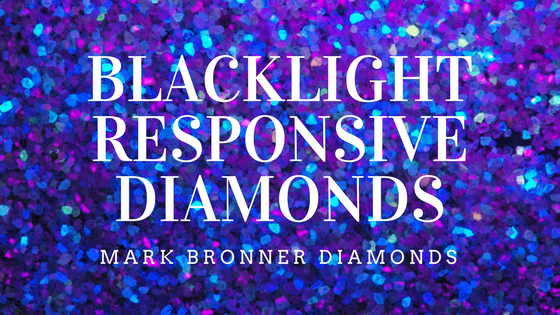 Certain diamonds have the ability to fluoresce a bright blue color in response to ultra violet light, which is also known as “black light”. This is due to the fact that about thirty percent of these precious gems contain an appropriate amount of Boron that allows them to emit this luminous glow as soon as the compound gets excited by the ultra violet lighting. The exact concentration of Boron present in that specific diamond determines the strength of the fluorescence. The two factors are linearly related, which means that level of radiance expressed by the diamonds changes according to the individual stone. Experts have classified the resulting fluorescence into the following five categories: very strong, strong, medium, faint and none.
Certain diamonds have the ability to fluoresce a bright blue color in response to ultra violet light, which is also known as “black light”. This is due to the fact that about thirty percent of these precious gems contain an appropriate amount of Boron that allows them to emit this luminous glow as soon as the compound gets excited by the ultra violet lighting. The exact concentration of Boron present in that specific diamond determines the strength of the fluorescence. The two factors are linearly related, which means that level of radiance expressed by the diamonds changes according to the individual stone. Experts have classified the resulting fluorescence into the following five categories: very strong, strong, medium, faint and none.
While some consumers find appeal in this intriguing glow, others are skeptical of the diamond’s quality and color due to the added presence of Boron. The latter belief, however, is a misconception about this naturally occurring reaction. This misconception stems from the historical use of ultra violet light to sort out fake diamonds from real ones. However, what most people don’t know is that most diamonds reflect at least some amount of blue light in response to black light exposure. In fact, the GIA led research on the quality of fluorescing diamonds in 1997. The results confirmed that, despite the glow emitted by these diamonds under black light, the precious gems themselves do not have any inherent color defects or opacities. In fact, those diamonds categorized with strong or very strong fluorescence exhibited higher quality color than diamonds ranked in lower categories of fluorescence while in the table up position. In the table down position, there was no remarkable difference between gems with higher fluorescence versus those with lower fluorescence.
Despite the results from the GIA study, diamond buyers still tend to shy away from investing in the stones that respond to ultraviolet light. As a result jewelry merchants have established a separate pricing system for the fluorescing diamonds, one that takes the usual color and clarity of the diamond into account while adding on the stone’s fluorescence valuation. On the other hand, certain consumers are intrigued by this extra quality in diamonds and appreciate the subtle blues hues present in the fluorescing diamonds. In the end, it all comes down to personal preference as long as the precious gems are coming from a trusted and GIA certified vendor.
